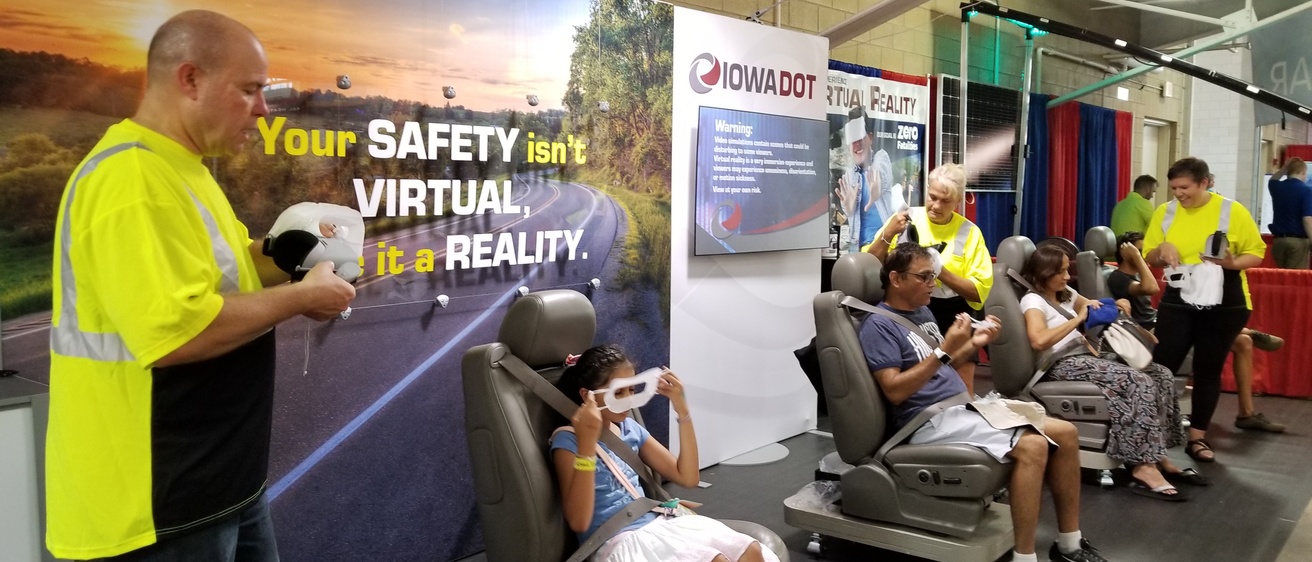Despite decades of research highlighting the importance of seat belts in saving lives, many drivers and passengers still do not wear them. In an effort to continue to raise awareness of seatbelt safety through the use of innovative technology, the University of Iowa’s Virtual and Augmented Reality Business Unit, in conjunction with the Virtual Solider Research Lab, has partnered with the Iowa Department of Transportation to offer a virtual reality simulation at the Iowa State Fair.
“Our simulation displays the effects of a moderate-speed crash on an unbelted driver,” said Karim Malek, director of the Center for Computer Aided Design and a professor of biomedical engineering. “We believe that this kind of first-hand, albeit virtual, experience will make a lasting impression and encourage more seatbelt use.”
The DOT simulation utilizes a virtual human, Santos, which was developed by University of Iowa engineering researchers and has been used in a number of VR environments including vehicle analysis, ergonomics, and military simulations. The crash simulation is making its debut at the Fair and will be available at the DOT booth throughout the current run of the fair which will end August 19.
”The simulation has had a powerful effect on many of the viewers. Many fair goers will lecture Santos, telling him to buckle his seatbelt. When the crash happens it’s fun to watch viewers try to slam on an imaginary brake or reach out to help Santos,” said Andrea Henry, Iowa DOT’s director of Strategic Communications, “Many people don’t understand the dangers to not only themselves, but others in the car of not wearing your seat belt. This has been an extremely effective way to make that case in a compelling manner, without putting someone in danger.”
About VARBU
The Virtual and Augmented Reality Business Unit (VARBU) is part of the Center for Computer-Aided Design and provides virtual reality (VR) services to the University of Iowa community and the public. Virtual reality has become a commodity in everyday life; head-mounted displays, VR sets, mixed and augmented reality, and CAVE virtual environments are just a few of the many devices and systems that have become popular.
